I like visiting Petrovac off-season, when it still looks like the idyllic and quiet village it used to be in the 1970s (see photo).
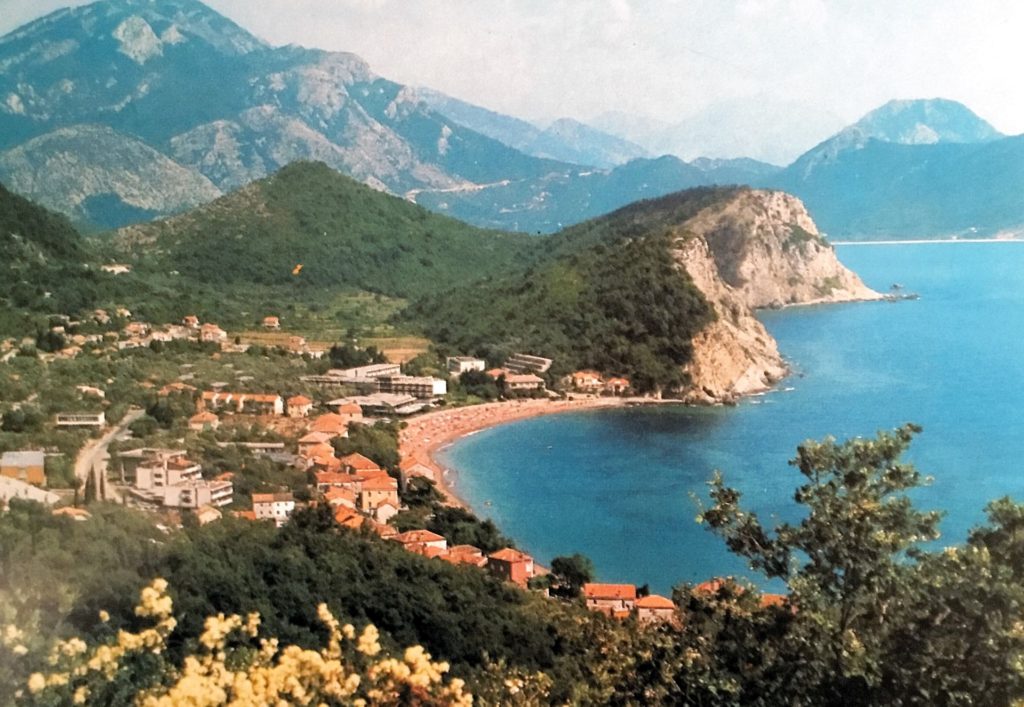 In those times, the few low-rise hotels and villas in the crescent-shaped secluded bay were usually occupied by elder guests from Western Europe, who loved the peaceful atmosphere, the red beach and the romantic promenade with old stone fishermen’s houses and traditional seafood restaurants.
In those times, the few low-rise hotels and villas in the crescent-shaped secluded bay were usually occupied by elder guests from Western Europe, who loved the peaceful atmosphere, the red beach and the romantic promenade with old stone fishermen’s houses and traditional seafood restaurants.
No need to compare this old photo of Petrovac with today’s crowdy tourist resort, where more and more high-rise structures are being erected directly along the beach. It is true, the corona crisis stopped the building boom, but there is no doubt that it will continue.
However, recently we discovered two beautiful walking trails, both beginning from Petrovac and leading to the neighboring beaches of Perazića Do and Buljarica. These nice walking tours are a good idea for all locals (and tourists), who want to spend a relaxing Sunday afternoon on the coast, enjoying pure nature and breathing fresh sea air. But let me give you some information about Petrovac.
Petrovac is located within the municipality of Budva and is part of the Budva Riviera. It has 1400 permanent inhabitants and is surrounded by olive groves and pine forests.
The main beach of Petrovac is formed of a reddish gravelly sand. It is 600 m long and it is backed by a charming promenade lined by palms and Mediterranean vegetation. Along this promenade and particularly at the northern end of the bay you can find many bars, cafes and seafood restaurants. The reconstructed 16th-century Venetian fortress called “Kastel Lastva” is sheltering the tiny harbor.
The Islands
Off the coast are two rocky islets. They can only be reached by sea (one kilometer from the coastline) and they are located close to each other. These islands, Sveta Nedjelja (Holy Sunday) and Katič, are very attractive to tourists and photographers.
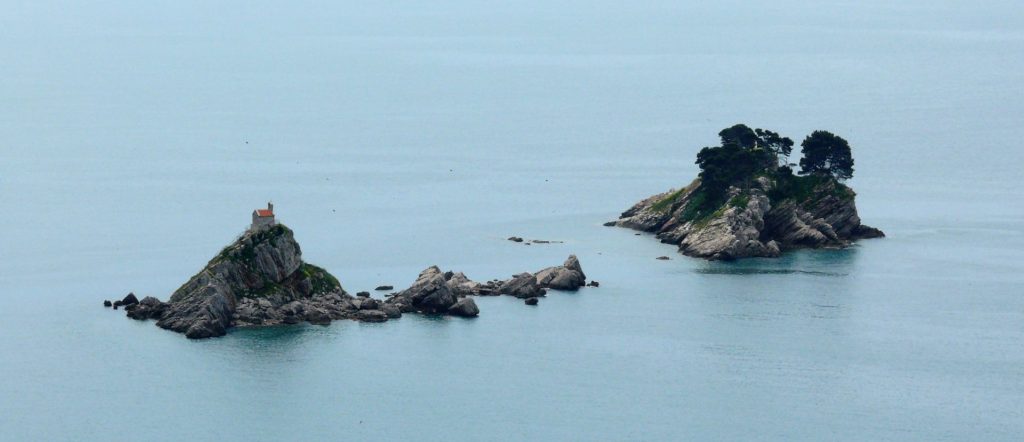 There is an interesting legend about the island of Sveta Nedjelja and the church on it:
There is an interesting legend about the island of Sveta Nedjelja and the church on it:
A long time ago, there was a strong storm on the Adriatic Sea, which destroyed a ship near the coast of Petrovac. Only a few sailors survived and found refuge on the small rocky islands. As a sign of gratitude for their salvation, they built a small church on one of them. As the shipwreck happened on Sunday, they called it the church of Sveta Nedjelja, Holy Sunday.
The island is still believed to protect the sailors. Tourists like to swim to the island, to climb up to the church and to ring the bell – that will surely bring them luck and happiness. But of course, you can also rent a boat at the small harbor.
History
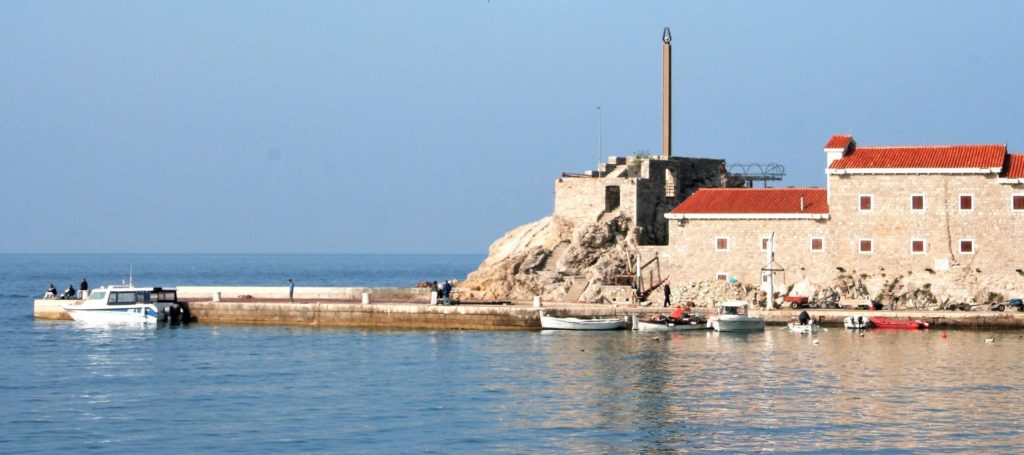 Petrovac was originally founded by the Romans in the 3rd century A.D. This settlement was just a station along the Roman caravan road along the Adriatic coast.
Petrovac was originally founded by the Romans in the 3rd century A.D. This settlement was just a station along the Roman caravan road along the Adriatic coast.
In the 16th century, the Venetians built a “Lazzaretto” (military hospital) on the shore, and above it a small fortress, called Castellum. Since then, the place was called Kastel Lastva and in the 19th century it became an important center for the Paštrovići clan.
The name was changed into Petrovac after World War I, in honor of King Petar I Karađorđević of Yugoslavia. At that time, the village had 300 inhabitants only.
Walking trail to Perazića Do
From Petrovac, there is a picturesque path that leads through the forest and along the coast to the beach of Perazića Do and further upwards to the Reževići Monastery (3 km + 150 m climbing). As we had visited this 14th-century monastery before, we just made the walking tour to Perazića Do, which was around 2 km from the town (in one direction).
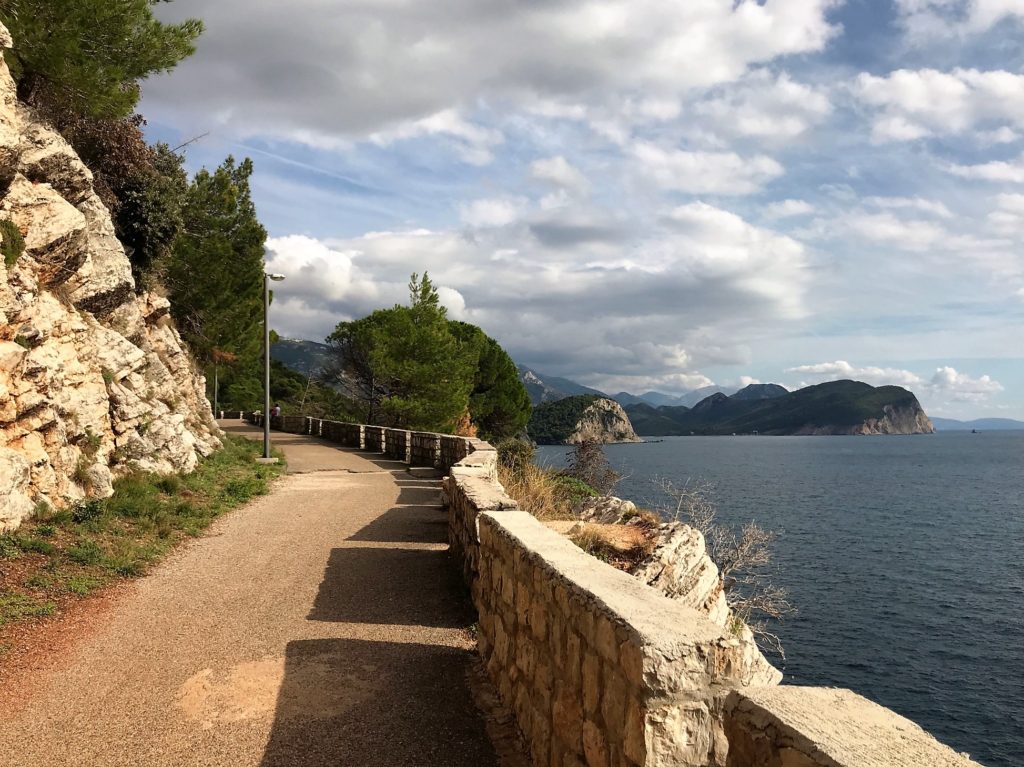 We started our walk behind the Monte Casa Hotel. There was a clear signpost and a path that took us uphill through pine forests and Mediterranean vegetation. The path was paved and protected by side walls; coming from the forest, it continued directly along steep cliffs above the sea, from where we had a magnificent view of the islands. It was very quiet up there: we just heard the sound of the waves and the screeching of the seagulls.
We started our walk behind the Monte Casa Hotel. There was a clear signpost and a path that took us uphill through pine forests and Mediterranean vegetation. The path was paved and protected by side walls; coming from the forest, it continued directly along steep cliffs above the sea, from where we had a magnificent view of the islands. It was very quiet up there: we just heard the sound of the waves and the screeching of the seagulls.
A warning sign showed that we approached a 500 m long tunnel. Although we had read on the internet that the tunnel was not lighted and that we should carry a flashlight, it was a surprise to see that the lighting inside was more than sufficient. Actually, the tunnel consists of three separate tunnels and it is quite easy to pass them (see photo 1).
Leaving the last tunnel, we reached the beach of Perazića Do … and, of course, the unfinished hotel AS, also called the “Titanic of Montenegro”.
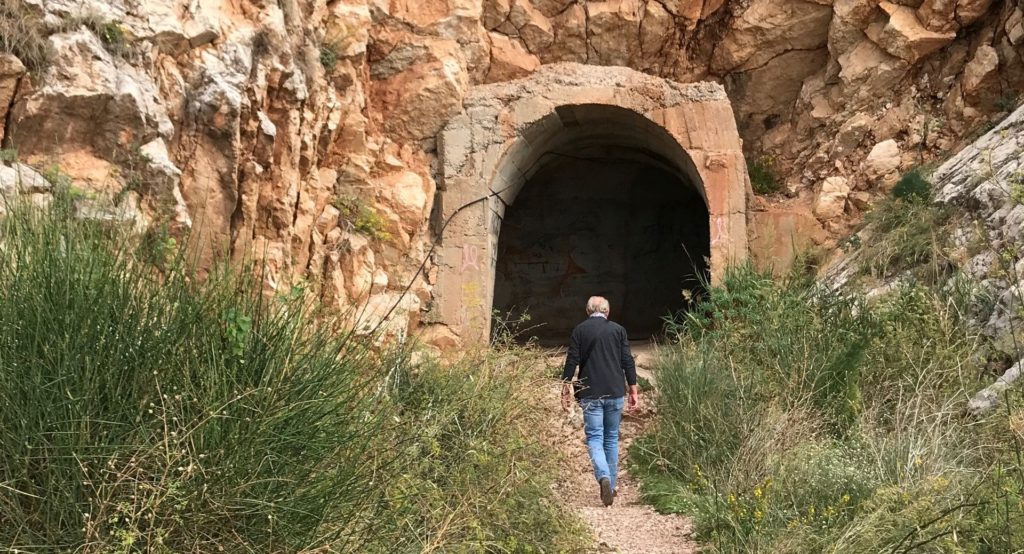 What happened to this huge hotel? Its construction started in the eighties of the last century and was never finished.
What happened to this huge hotel? Its construction started in the eighties of the last century and was never finished.
After the fall of Yugoslavia, the sales of the AS hotel was one of the first privatizations in catering industry. The new owner, Nega Tours, wanted to build a larger hotel, but the reconstruction project was stopped after three years, as the government terminated the contract due to the delays and the false guarantees given by the investors. The abandoned hotel that once had around 400 rooms, dilapidated and turned into ruins.
Unfortunately, I don’t know anything about the future of the construction site. Or is there no future?
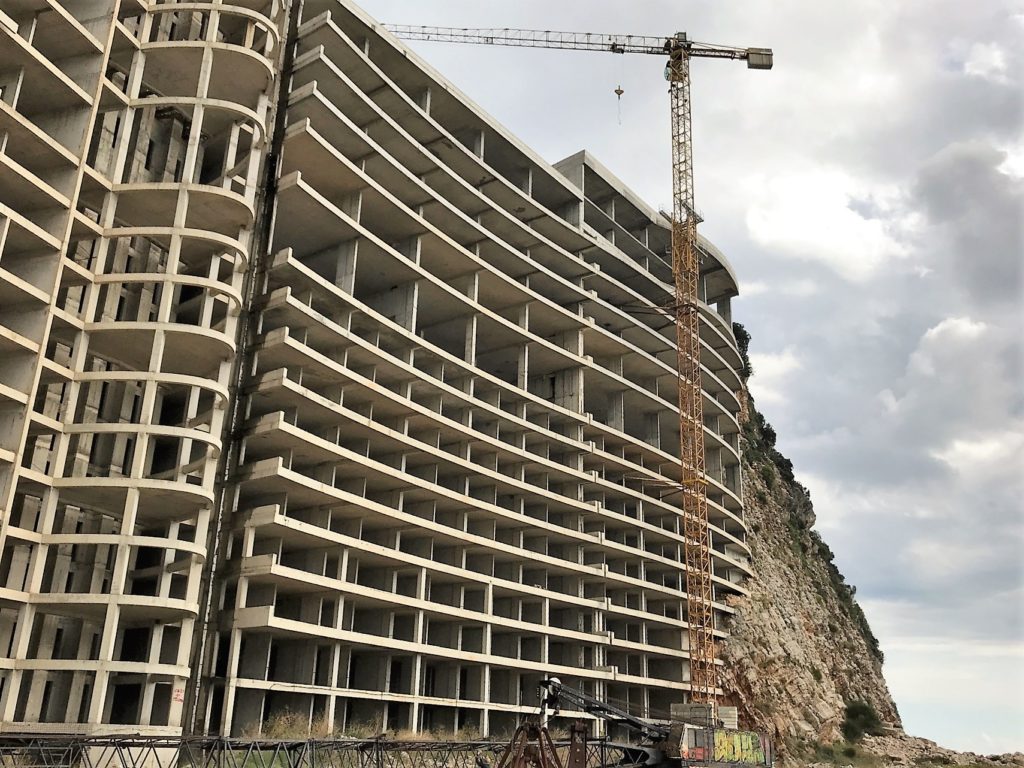 Another question: who built the tunnels for the walking path (that was quite a job!)? It was clear that one branch of the last tunnel – now blocked – led inside the hotel building. In that case, we can only be happy that the tunnels were preserved and that tourists and locals can make such a nice walk to Perazića Do.
Another question: who built the tunnels for the walking path (that was quite a job!)? It was clear that one branch of the last tunnel – now blocked – led inside the hotel building. In that case, we can only be happy that the tunnels were preserved and that tourists and locals can make such a nice walk to Perazića Do.
The pebble beach of Perazića Do is only 40 m long and it is located just under the Reževići Monastery. There is a holiday settlement with a bunch of houses, built decades ago.
Roaming around the devastated hotel building, we were sad to see another unsuccessful investment in Montenegro…. But never mind, we enjoyed the beautiful beach and returned along the same path to Petrovac. It was a wonderful hike!
Walking trail to Buljarica
The walking trail to the Buljarica Beach begins from the Lučica beach. This beach can be reached by car (1 km), but also by walking over the hill of Malo Brdo through a nice pine forest.
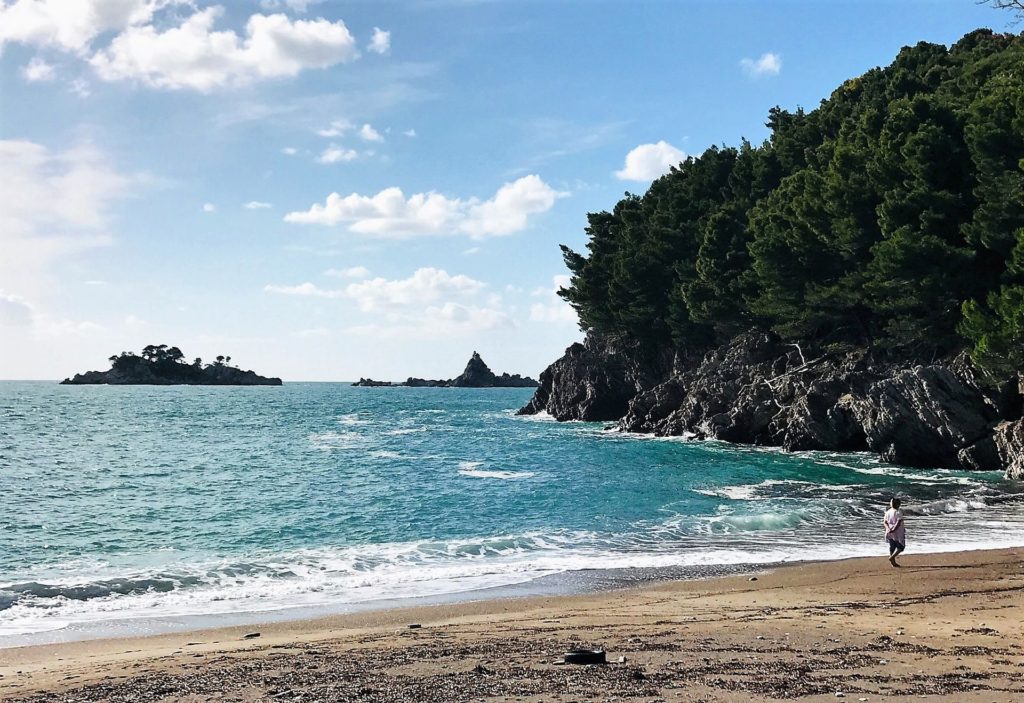
Lučica is well-known for its crystal clear water and the surrounding pine trees, hanging over the cliffs. In summer it is quite popular and there are several pubs and bars – which were now closed, although some tourists were still swimming and sunbathing on the beach.
The walk from the Lučica beach to Buljarica was around 1 km long (height difference 60 m). We found a wooden signpost at the end of the beach, next to the playground.
The path took us uphill through the pine forest over a concrete (lighted) path, over the hill, until the Buljarica beach, which is more than 3 km long. It is one of the longest beaches in Montenegro and it is surrounded by wetlands. So far, there have not been any significant tourism developments.
Again, we had to take the same way back, but the walk was absolutely refreshing!
So, do you want to make a nice walk along the coast off-season? Enjoy the fresh sea air and the scent of pine forests around Petrovac!
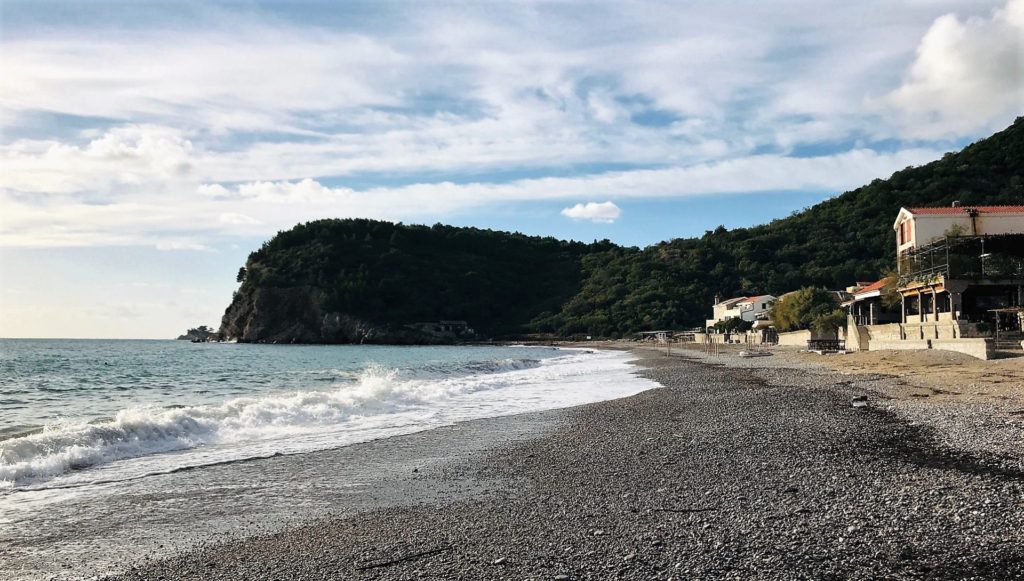


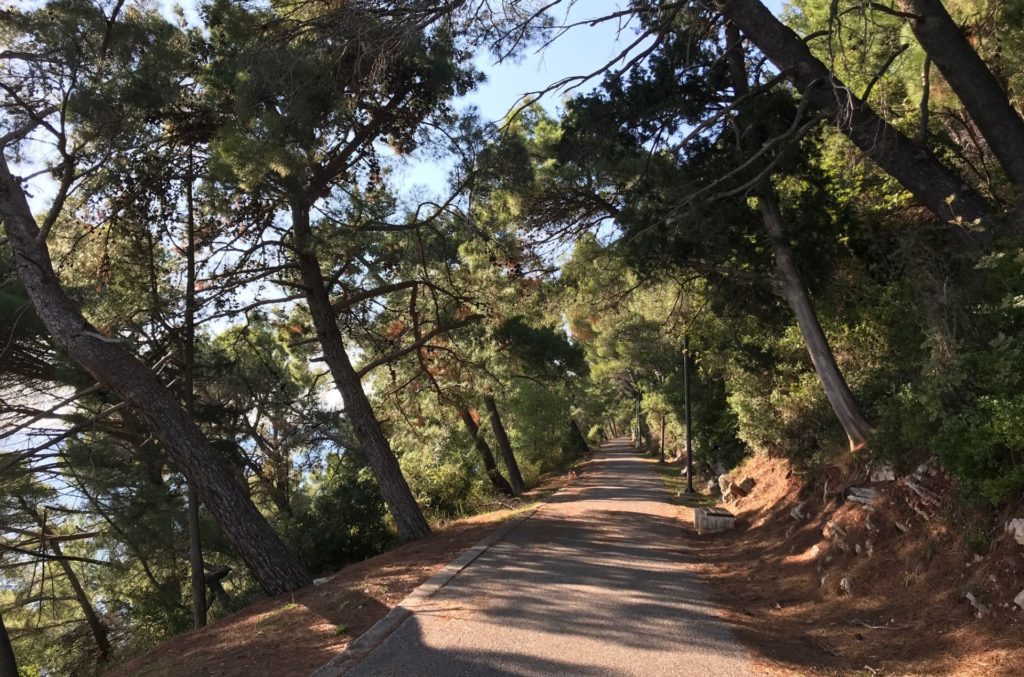
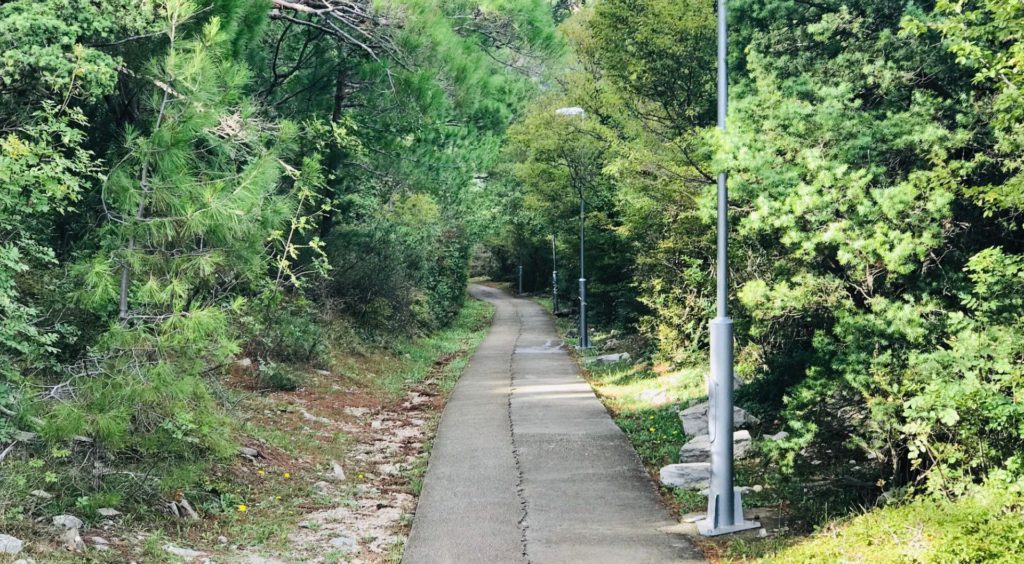
Thank you for your posts…We visited Monenegro last year as a couple for the first time and your very thoughtful and interersting travel writings which inspire and encourage us to revisit and continue our exploration of your lovely adopted country.
Thank you for your nice words! There are still many things to explore in this beautiful country!
We went there in 1988 and wanted to know if hotel As was still there
Yes, but it is still “under construction”, it was never finished.
I used to work in the hotel when it was open to the public and operational, it was run by Yugotours at the time – it was the first year that they ran it , taking over from a French holiday company. I did past of one season there as part of the entertainment team before being given my own hotel in Budva … I believe I was 20 or 21years old at the time , so that’s about 38/39 years ago ! Wow …